All about decorative leafy begonias
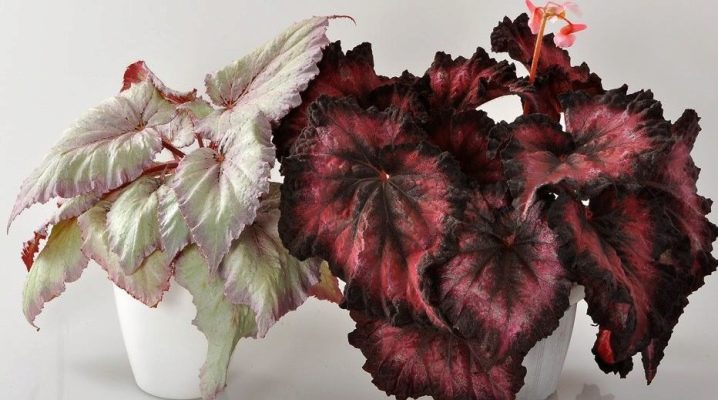
For many years begonia was one of the most popular plants in indoor floriculture - its unusual carved leaves adorned the windows of the houses of many of our compatriots. Unfortunately, at the beginning of this century, begonia was undeservedly forgotten.
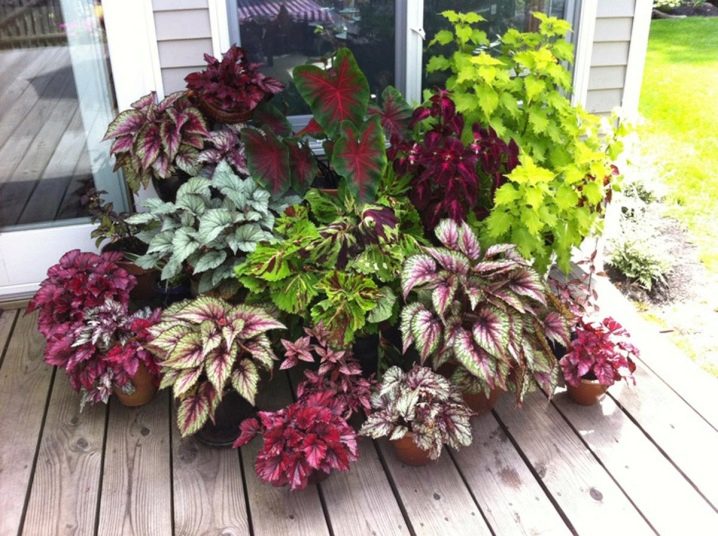
Description
Domestic begonias belong to the genus begonias and are herbaceous plants, although there are some species, the stem of which is lignified. As a street and greenhouse culture, begonia has become widespread in many countries of the world, but the territory with a tropical and subtropical climate is considered the birthplace of the flower - the Amazon basin in Brazil, the central part of the African continent, as well as the countries of Southeast Asia.
In natural conditions, begonia prefers shady areas with diffused lighting, high humidity and loose, slightly acidic soils. Begonia easily withstands an increase in temperature, but does not tolerate excessive moisture in the earth. Begonia came to us during the reign of Emperor Peter the Great, then several dozen plants were brought to the country from Holland. Today, huge collections of this beautiful plant adorn the largest botanical gardens in Moscow, as well as in St. Petersburg and Novosibirsk.
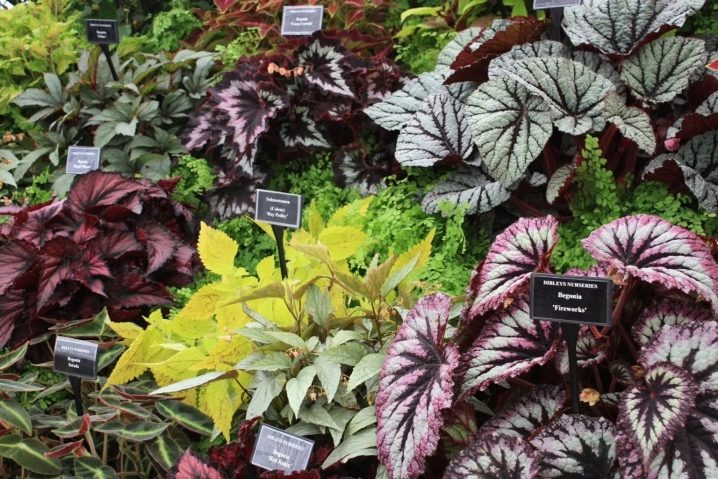
The genus of begonias includes many of the most interesting species: there are bush and tuberous, ampere, as well as decorative deciduous and flowering - any florist will always find the variety that suits him and will become a real highlight of the interior. Today, "grandmothers" begonias are experiencing a new surge in popularity, this is not surprising, because they personify unshakable classics and beauty. And even the fact that most of these plants are poisonous does not prevent them from remaining a spectacular interior decoration.
Most begonias are limited in length of 20-40 cm, but this rule has rare exceptions. - Science knows very tiny varieties, as well as gigantic ones, growing by more than 1 meter. Leaf plates grow on pubescent shoots, they can be rounded, lanceolate, heart-shaped, as well as maple and lobed. The contours of the leaves are hidden by pointed teeth at the edges.
By the way, such carved edge at one time it became the reason that some begonias were placed on a par with other dangerous indoor plants, but this notoriety quickly dissipated. The jagged edges give the plant a rather prim and aristocratic look.

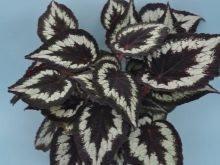
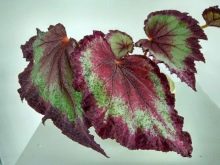
All begonias have a pronounced thick vein in the center, it divides the surface into 2 unequal parts, this asymmetry only emphasizes the originality of the texture and shade. Leaves can be dull or waxy, velvety or satin, while shades can be very diverse - often with pronounced silver, bronze and gold notes.
Most begonias bloom at home, however, not all varieties are distinguished by beautiful flowering - in leafy varieties, the flowers are rather small, inconspicuous, therefore they do not have any decorative function.
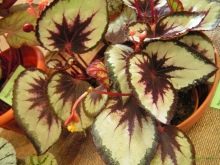

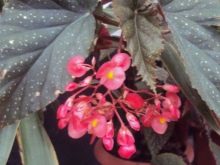
Popular species and varieties
There are over 1000 varieties of begonias, both outdoor and indoor. The most popular are the following.
- Kane begonias - these are bushy or reed plants, distinguished by an erect stem, rather beautiful leaves and flowers with a delicate fragrant aroma.Such flowers reach a height of 2 m, therefore, they are most often grown in greenhouses and conservatories.
- Royal begonias - herbaceous plants with delicate colorful leaves, thick stems and creeping fleshy roots.
- Eternally flowering - are rather compact bushes, waxy leaves, can be painted in a variety of shades, in the conditions of central Russia they are cultivated as garden annuals.
- Tuberose - a rather unpretentious variety with beautiful large flowers.
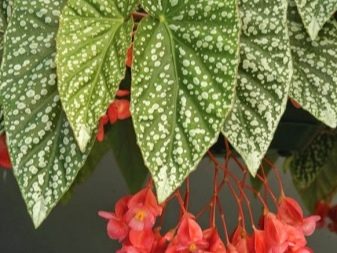
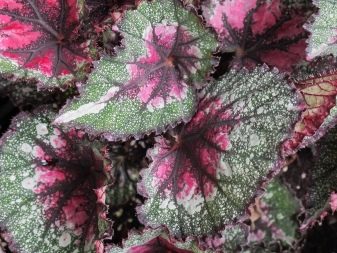

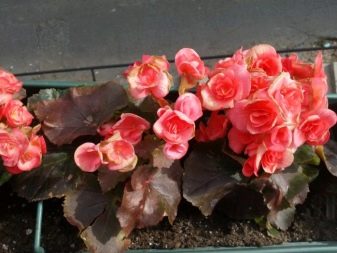
Many varieties and varieties of begonias are adapted for living at home. Among the most popular begonias in indoor floriculture the following varieties should be noted.
- "Mason" - a rather compact begonia, a feature of which are pimply green leaves with a crimson spot, which visually resembles a Maltese cross - this color makes the flower very decorative and effective. The sheet plate is asymmetric, heart-shaped... Creeping roots, thickened and pubescent with numerous hairs.
The leaves form a lush bush with a height of about 20-30 cm, although while maintaining comfortable living conditions, the plant can grow up to 50 cm. The flowers are small, expressionless.
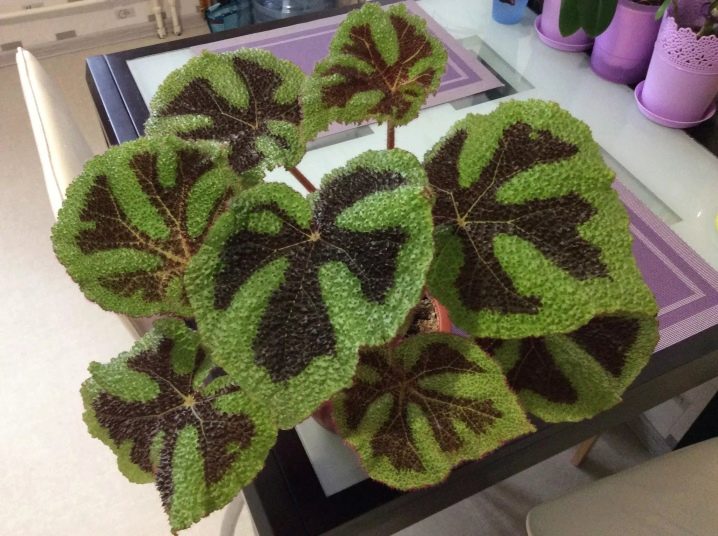
- Begonia "Bauer" - a very small houseplant with a height of only 10 cm, the leaves are heart-shaped, velvety, the edges are rounded, their color looks very unusual: against a dark, almost black background, light green stands out sharply, bronzed spots the edge is framed with milky white cilia, and the veins are very clearly traced. Leafy cuttings are red in color. In spring, peduncles appear from the rhizome.
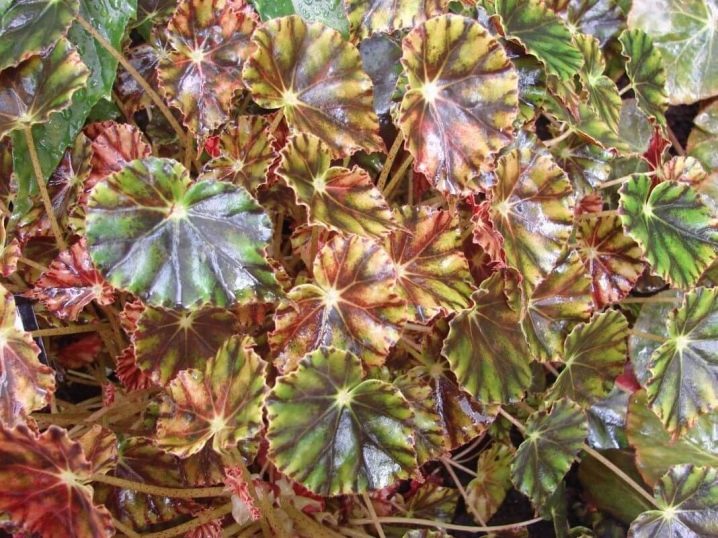
- Collar begonia Is another pretty interesting home begonia. This is a very unpretentious variety, which features large light green leaves, the diameter of which reaches 30 cm. The foliage forms a rather lush and spreading bush, the plates are cut at the edges and covered with small villi, the upper part is glossy, and the lower part is covered with "cilia". At the point of attachment of the cutting with leaves of red hairs, a kind of "cuff" is formed, which is why the plant got its name.
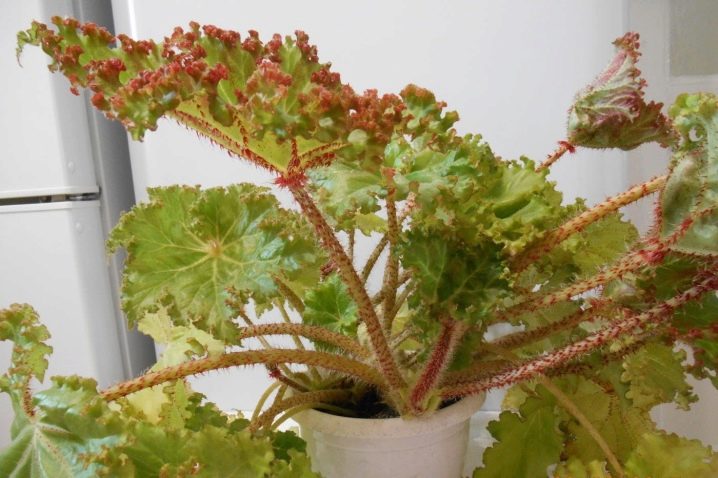
- Red-leaved begonia - this plant is known to many growers under the name "Fiesta", it has a slightly shortened stem, long cuttings and round, slightly colored leaves. The surface of the plate is smooth, dense, almost glossy. The front side of the sheet is green, the back is painted in red, with well-traced white veins. Flowering is observed from December until the onset of spring.
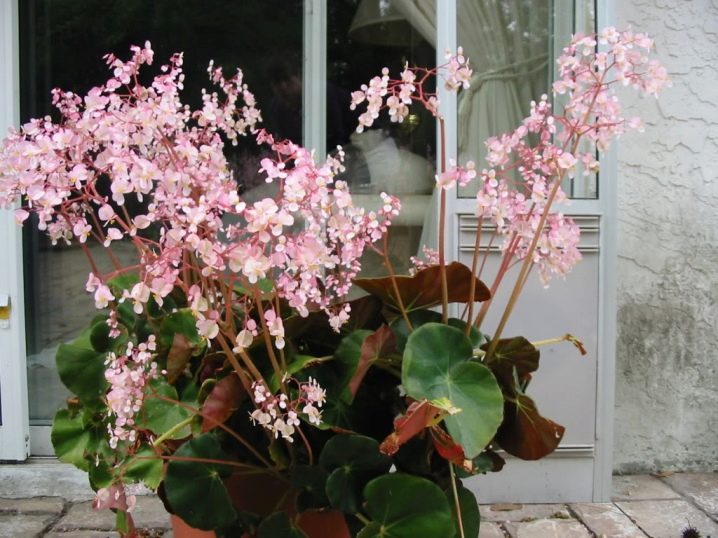
- Begonia hogweed - one of the most popular plants in home gardening. It is characterized by large, finger-dissected leaf plates with sharp jagged edges and a heart-shaped base. Leaves are colored relatively evenly, silvery gray streaks distributed over the entire surface, while the saturation of the hue depends on the level of illumination. The inflorescences are enlarged, but inconspicuous.
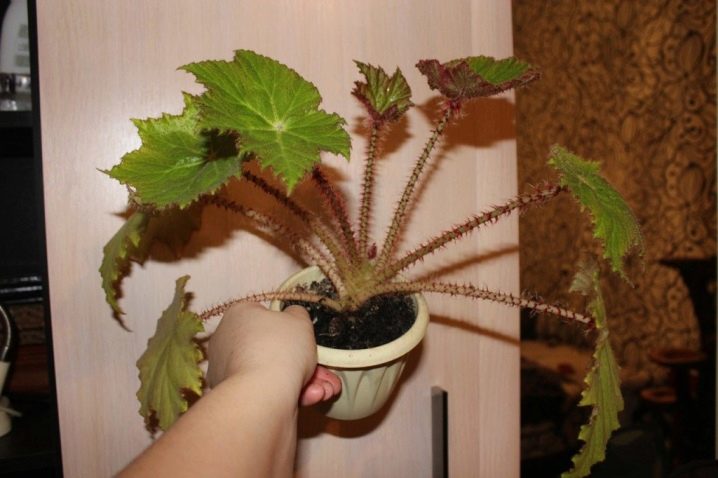
- Spotted begonia - bush begonia, has an erect stem, in favorable conditions can reach several meters, therefore, it is grown, as a rule, in greenhouses. The leaves are elongated, asymmetrical, the apex is pointed. Leaves visually resemble angel wings in shape., this is what the plant was called at the time of our grandmothers. The surface of the leaf plate is glossy, very dense, the color (deep green) is literally speckled with white veins. The back side is reddish red.

Care rules
Begonia - pretty unpretentious a houseplant, but in order for it to continue to delight its owners with a decorative look for many years, the flower should create comfortable living conditions.
Landing
Planting and transplanting work with begonia should be carried out at the very beginning of spring.when the plant is just awakening from the winter period and starts up in active growth. The fact is that placing in a new soil for some time suspends the development of the flower, since the plant is under severe stress from the changed habitat conditions. This must be taken into account when buying a new flower - store-bought begonias for a long time grew in greenhouse conditions in compliance with all the rules of agricultural technology and optimal living conditions, and at home the plants are forced to adapt to the new environment.
Land for planting should be slightly acidic, almost neutral, fertile, with high parameters of water and air permeability. You can buy ready-made soil mixture, or you can collect it yourself. To do this, in equal shares mix humus and leafy soil, disinfect, and then add river sand and perlite.
The container for indoor begonias should be shallow but wide. The root system of this flower is superficial, so if the capacity is too large, then waterlogging will begin in the layers of the earth where there are no roots, which is very detrimental to the plant.
The pot material can be anything, it is very important to provide an effective drainage system that will allow all excess water to be removed.

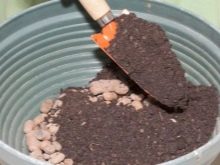
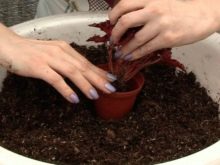
Watering
Water the begonias with soft water. Watering should be regular, but moderate, it is best to be guided by the state of the earthen coma - as soon as the upper part of the soil dries out to a depth of 1 cm, you can safely take up the watering can. Unlike many other plants, begonia does not like to be sprayed.
In order to provide her with a comfortable living environment, it is better to put a container of water next to the pot or lay out the bottom of the pallet with sphagnum moss.
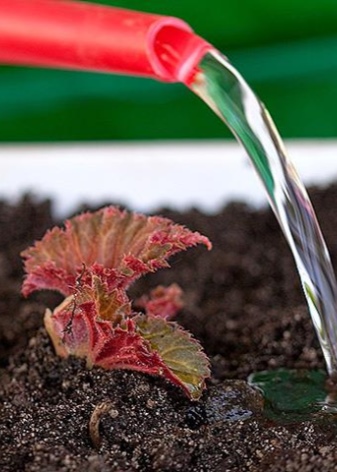

Microclimate and feeding
The air temperature in the room should be moderate - from 18 to 24 degrees, the plant does not tolerate being in a draft, and also withers next to radiators and other heating devices. Begonias love light very much, but it should be diffused, direct rays of the sun can burn the leaf plates... In the phase of active growth and development, begonia requires fertilizers, they must be applied every 2 weeks, alternating mineral and organic fertilizing. No fertilization is required during the dormant period.
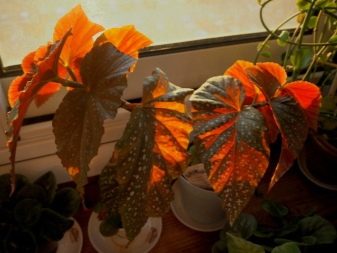
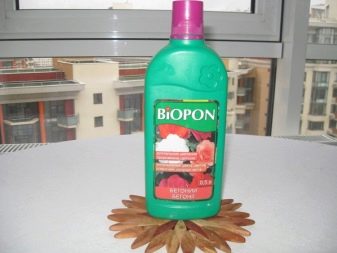
Reproduction methods
Flowering and decorative deciduous varieties can be propagated in several ways. The most effective are the following.
- Rhizome separation when transplanting several large parts - this can be done even with your hands, carefully cutting the trunk, but it is important to ensure that roots and at least one bud with a shoot remain in each division.
- Rooting cuttings - this procedure is one of the simplest, in this case, the apical process with 3-4 leaves is separated and placed in a container with water for rooting. As soon as the first roots appear, the cutting is moved to a permanent place in the pot.
- Rooting by leaves - in order to propagate begonia by cutting leaves, you need to cut the leaf plates exactly along the veins, after which place the cut on moistened river sand and press down with small pebbles. When begonias are propagated by leaf particles, roots appear at the cut site within 1.5 months, after which they begin to grow a strong and powerful plant, which after a while should be separated from the mother leaf.
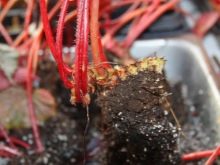
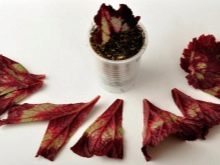
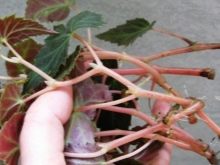
Diseases and pests
Unfortunately, domestic begonias can in no way be attributed to persistent crops, they are quite often affected powdery mildew, as well as gray mold, thrips, aphids and spider mites... This plant is one of the most sensitive to ground nematodes. The fight against diseases and insect pests in begonias should be started immediately with the use of fungicides and insecticides. Traditional methods such as soap solution are considered unacceptable and ineffective here.
When growing begonias, flower growers may also face the following problems:
- the release and shedding of leaves is a frequent consequence of excessively dry air or drying out of the soil in a pot;
- loss of pigmentation of leaf plates in combination with brown dried out tips - a consequence of poor watering;
- stretching of leaves occurs with excessive shading.
See below for more details.































The comment was sent successfully.